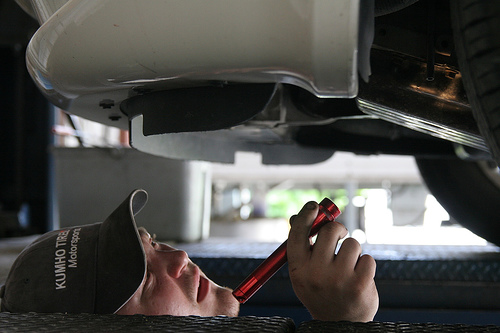Next to the home you live in, your car is probably the most expensive item you own, unless there is other property in your real estate portfolio. The purchase price of your car is substantial in its own right but it really only represents the beginning of motoring expenses, which continue to add up beyond the cost of a vehicle. Insurance, for example, is an additional motoring expense every driver shares. While the costs associated with maintaining adequate insurance policy coverage may not seem justified when claims are never made, carrying coverage is required by law and protects you in the event of an unanticipated incident. Kangaroopaydayloans.com can provide you with funds to cover any area of your purchase or maintenance of any vehicle.


Look by Ryan Stone, on Flickr. This work is licensed under a Creative Commons Attribution-NonCommercial-ShareAlike 3.0 Unported License.
Financing charges like loan origination fees and interest payments cannot be overlooked as additional car costs, unless you were able to buy your vehicle with cash and no financing contract required. While it is hard to do on expensive late model cars, drivers often cover the entire purchase price of used cars upfront, since they generally fall into more affordable price ranges. Even petrol plays a large role in your motoring budget, furnishing the lifeblood for your car, which is useless without a steady stream of fuel. The more you drive, the more you spend on petrol – it is as simple as that. The price of petrol moves on a sliding scale, so it can be difficult to forecast driving expenses into the future, when petrol prices are unknown.
Lower Driving Costs Keep Motoring Reasonable
With the mounting costs of staying on the road, drivers seek money saving strategies for reducing the total cost of motoring. To reduce petrol costs, for example, prudent drivers choose vehicles that have higher mileage and performance ratings than others, which do not exhibit the same levels of fuel economy. With every pound saved on petrol, fuel-efficient drivers trim costs from their total driving tabs. In addition to driving a vehicle of proper fuel standards, one way to save money driving is to keep your car on the road longer than you might otherwise plan to drive it. By staying on pace with regular maintenance and upkeep schedules, car life is extended, putting off the expense of buying a new car. Not only is it money in the bank to squeeze extra miles out of your paid-for vehicle, but driving it longer gives you more time to set aside money for your next car. By the time you make a vehicle purchase, you’ll have more money to contribute to the purchase price, so your financing costs will ultimately be lower than car buys made earlier.
Manufacturer Recommended Maintenance Schedules
To operate at their peak performance levels, cars require certain measures of care and maintenance. For drivers unfamiliar with the needs of combustion driven machines, owner’s manuals and care guides are provided by car manufacturers. To prolong the life of your vehicle, follow the care recommendation provided with your car. No one is better equipped to suggest care standards than the car’s maker, so take their advice seriously to keep cars running tip top. Certain car components require periodic replacement, to hedge against wear and keep machines running smoothly. Timing belts and other replaceable parts are addressed in maintenance schedules with mileage recommendations about when parts should be replaced. While these repairs should be left to certified mechanics, there are other points of maintenance falling within your realm of responsibility. Keeping engine parts lubricated is essential for proper vehicle performance, so premature wear is expected when drivers don’t stay on top of this important maintenance regime. Motor oil, for example, should be changed every few thousand miles, so piston rings and cylinders do not wear excessively.
